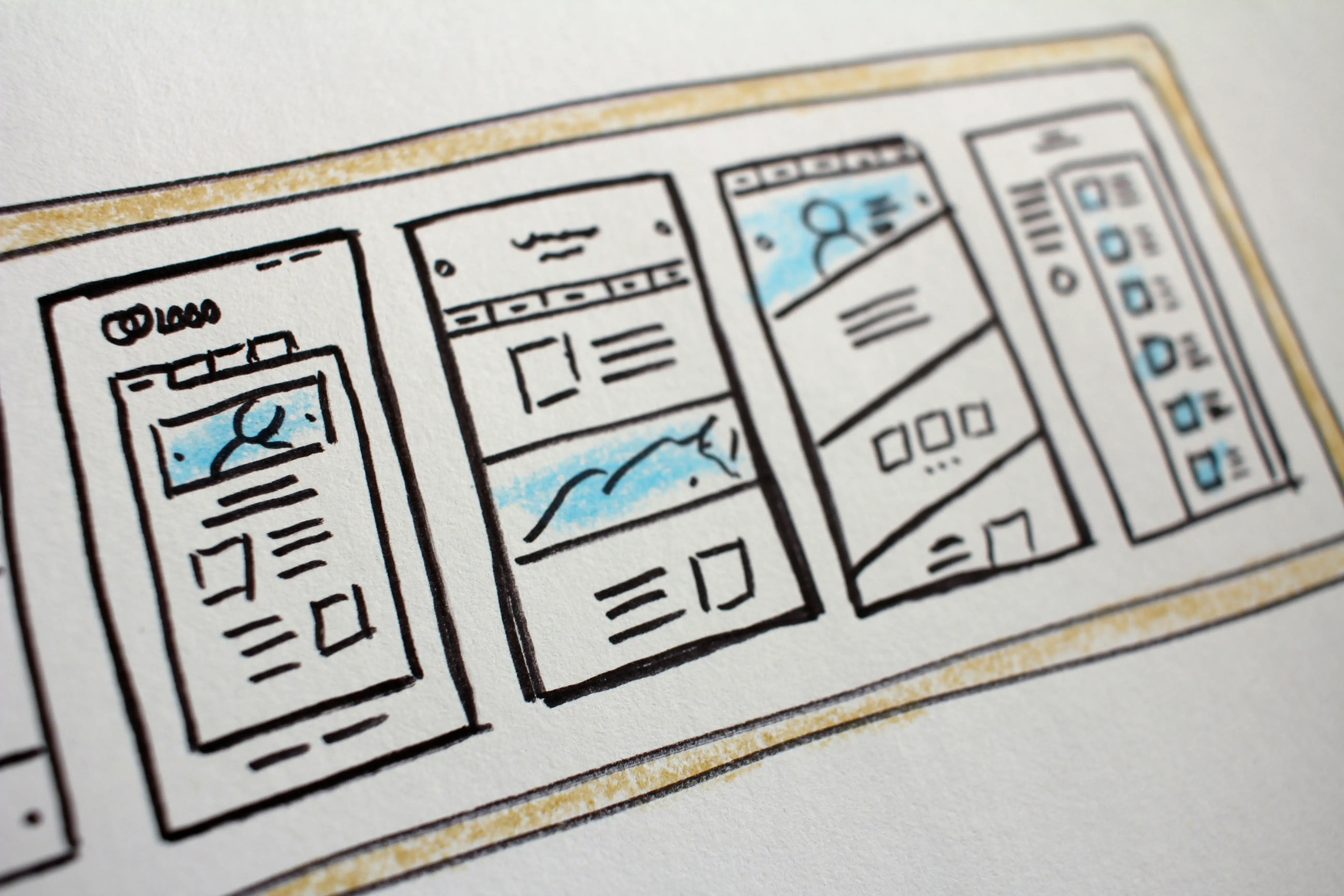Introduction
Product listing optimisation forms the cornerstone of successful Shopify conversion rate optimisation (CRO). While many store owners focus on checkout improvements and traffic generation, the reality is that your product pages are where most conversion decisions happen. A well-optimized product listing can increase your conversion rate by 30-50%, directly impacting your store’s revenue without requiring additional marketing spend.
These seven proven strategies will help you transform your product listings into conversion powerhouses that work seamlessly with your broader CRO efforts to maximize every visitor’s potential value.
Understanding Shopify Product Listing Optimisation
What is Product Listing Optimisation?
Product listing optimisation is the systematic process of enhancing every element of your product pages to maximize conversion rates. This CRO-focused approach involves fine-tuning titles, descriptions, images, and user experience elements to guide visitors naturally toward purchase decisions.
Unlike basic product uploads, optimisation considers customer psychology, search behavior, and conversion barriers. It’s about creating listings that not only attract visitors but systematically address their concerns and motivations to drive higher conversion rates.
Importance of Conversion Rate Optimisation
Conversion rate optimisation directly multiplies your revenue potential. When you optimize product listings as part of your comprehensive CRO strategy, you’re maximizing the value of every marketing dollar spent driving traffic to your store. Even modest improvements from 2% to 3% conversion rates represent a 50% revenue increase.
Optimized listings also contribute to better overall store performance by improving customer satisfaction, reducing bounce rates, and creating positive feedback loops that enhance your search rankings and repeat purchase rates.
Strategy 1: Crafting Compelling Product Descriptions
Elements of an Effective Description
Compelling product descriptions directly impact conversion rates by addressing customer objections before they arise. Start with benefit-focused headlines that immediately communicate value, then structure your content to guide readers through features, benefits, and social proof systematically.
Focus on outcomes rather than specifications. Instead of listing technical details, explain how those features solve customer problems or improve their lives. This approach reduces cognitive load and helps customers envision the value they’ll receive, leading to higher conversion rates.
Use formatting strategically with bullet points, short paragraphs, and bold text to improve scannability. Most customers skim product descriptions, so make key conversion drivers easily discoverable through visual hierarchy and strategic emphasis.
Best Practices for SEO-Friendly Descriptions
SEO-optimized descriptions support your CRO efforts by attracting qualified traffic more likely to convert. Include primary keywords naturally within the first 160 characters while maintaining readability and conversion focus.
Use long-tail keywords that reflect high-intent search queries, such as “best wireless headphones for running” rather than just “headphones.” These targeted visitors often have clearer purchase intent and convert at higher rates than generic traffic.
Structure content with HTML headings and include relevant keywords in alt text to improve search visibility while maintaining the conversion-focused flow that drives sales.
Strategy 2: Utilizing High-Quality Imagery
Importance of Product Photography
High-quality product photography directly influences conversion rates by building trust and reducing perceived purchase risk. Professional images can increase conversion rates by up to 40% compared to poor-quality alternatives, making photography one of your highest-impact CRO investments.
Effective imagery showcases products from multiple angles while demonstrating scale, context, and key features. Include lifestyle shots that help customers visualize product use, addressing the “Will this work for me?” question that often prevents conversions.
Tips for Image Optimisation
Optimize images for both visual appeal and page load speed, as slow-loading pages can reduce conversion rates by 7% for every additional second of delay. Use compressed formats like WebP while maintaining visual quality that supports purchase confidence.
Implement zoom functionality and multiple image views to replicate the in-store examination experience. This feature can significantly reduce return rates while increasing conversion confidence, particularly for higher-value items.
Consider implementing image-based features like 360-degree views or augmented reality previews where appropriate, as these interactive elements can boost conversion rates by reducing uncertainty about product appearance and fit.
Strategy 3: Keyword Integration
Finding the Right Keywords
Strategic keyword research supports CRO by attracting visitors with clear purchase intent. Use tools like Google Keyword Planner to identify terms that balance search volume with conversion potential, focusing on keywords that indicate buying readiness.
Analyze customer service inquiries and reviews to discover the exact language your audience uses when describing problems your products solve. These insights help you target high-converting search terms that competitors might overlook.
Placement in Titles and Descriptions
Strategic keyword placement enhances both search visibility and conversion rates by aligning customer expectations with product reality. Include primary keywords in titles while maintaining clarity about product benefits and key features.
Use keywords naturally throughout descriptions to reinforce relevance while maintaining the persuasive flow that drives conversions. Avoid keyword stuffing that disrupts readability and reduces conversion effectiveness.
Strategy 4: Enhancing User Experience
Importance of Navigation
Intuitive navigation directly impacts conversion rates by reducing friction in the customer journey. Poor navigation can decrease conversion rates by up to 25%, while optimized user flows guide customers seamlessly toward purchase decisions.
Implement clear category structures and search functionality that help customers find relevant products quickly. Consider how navigation choices impact your overall mobile conversion rate, as mobile users have particularly low tolerance for navigation difficulties.
Mobile Optimisation Techniques
Mobile optimisation is crucial for CRO success, as mobile visitors often have different behavior patterns and conversion barriers than desktop users. Ensure your product listings load quickly and display properly across all device types to avoid losing potential conversions.
Implement touch-friendly interfaces with appropriately sized buttons and simplified forms. For comprehensive mobile CRO strategies, refer to our detailed guide on improving Shopify mobile conversion rates.
Strategy 5: Implementing Customer Reviews and Social Proof
How Reviews Impact Conversion Rates
Customer reviews can increase conversion rates by up to 270% by providing social proof that reduces purchase anxiety. Reviews address common customer questions and objections while building trust through authentic customer experiences.
Strategic review implementation supports broader CRO efforts by providing user-generated content that addresses conversion barriers you might not have considered. This social proof works alongside other conversion rate improvement strategies to create compelling reasons for purchase.
Best Ways to Display Reviews
Display reviews prominently on product pages where they can influence purchase decisions most effectively. Use star ratings in search results and category pages to improve click-through rates before customers reach individual listings.
Implement review filtering and sorting options that help customers find relevant feedback for their specific situations. This functionality increases review engagement while addressing individual concerns that might otherwise prevent conversions.
Strategy 6: Call-to-Action (CTA) Optimisation
Crafting Clear and Urgent CTAs
Effective CTAs guide customers seamlessly toward conversion with clear, compelling language that creates urgency without appearing pushy. Use action-oriented verbs that reflect your brand voice while maintaining clarity about the intended action.
Consider implementing sticky add to cart solutions that keep conversion opportunities visible as customers scroll through product information. This approach can significantly improve conversion rates by reducing friction in the purchase process.
Testing Different CTA Designs
A/B testing different CTA designs reveals optimisation opportunities that can substantially impact conversion rates. Test variables like button color, placement, and text to identify what resonates best with your specific audience.
Track complete conversion metrics rather than just click-through rates to understand the full impact of CTA changes on your overall conversion performance and revenue.
Strategy 7: Regularly Updating Product Listings
Analyzing Performance Metrics
Regular performance analysis ensures your optimisation efforts continue supporting broader CRO goals. Monitor metrics like conversion rates, bounce rates, and time on page. Review these metrics monthly, quarterly, and annually to measure the impact of your optimisation efforts over time and identify further optimisation opportunities.
Compare your performance against average Shopify conversion rates to understand where you stand and identify areas for improvement that will have the biggest impact on revenue.
Making Data-Driven Adjustments
Use performance data to guide optimisation decisions as part of your comprehensive CRO strategy. Implement changes systematically while measuring their impact on overall conversion performance.
Consider how product listing optimisations integrate with other conversion improvements like checkout optimisation to create a cohesive customer experience that maximizes conversion potential.
Conclusion
Optimizing your Shopify product listings is essential for maximizing conversion rates and revenue. These seven strategies work together to create compelling product pages that address customer needs while reducing conversion barriers.
Remember that product listing optimisation is just one component of comprehensive CRO success. Integrate these strategies with broader conversion rate improvements across your entire customer journey for maximum impact on your store’s revenue performance.
FAQs
What are the key elements of a product listing?
Key elements of a high-performing product listing include compelling titles with relevant keywords, benefit-focused descriptions, high-quality images, customer reviews, clear pricing information, prominent CTAs, and trust signals. Each element should work together to reduce conversion barriers and guide customers toward purchase decisions.
How often should I update my product listings?
Review and update product listings at least quarterly, with more frequent updates for high-performing products. Monitor conversion metrics monthly to identify listings needing immediate attention, and update whenever you notice declining performance or receive new product information that could improve conversion rates.





